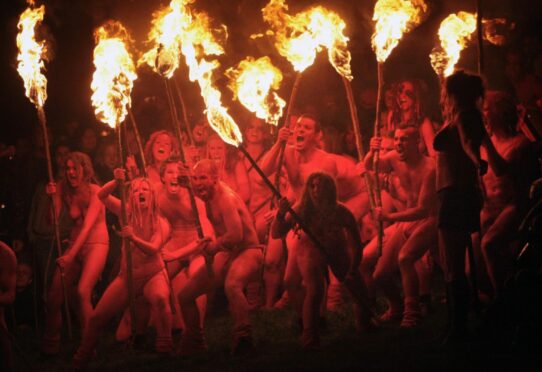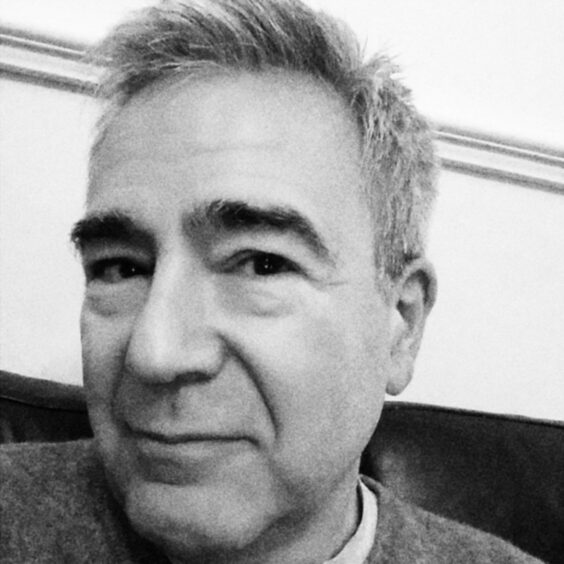
Halloween’s roots stretch back centuries, to an ancient Celtic festival marking the end of the harvest season and the onset of winter.
Neill Martin, senior lecturer in Scottish ethnology at Edinburgh University, tells Patricia-Ann Young the Honest Truth about Samhain.
What was Samhain?
The growing season over and the harvest taken in, Samhain marks the beginning of the dark period of the year. Celtic tradition saw the day beginning at dusk, not dawn; in the same way, the new year in this tradition begins in darkness, on the eve of the day.
Hence Samhain can be thought of as the Celtic New Year, the beginning of winter. It was also when the animals were brought down from summer pastures.
Why was it celebrated?
Samhain was a celebration of the year that had passed and a thanksgiving for the gifts of nature that had sustained life. The themes of death and darkness are thought to have been prominent.
The sun is weakening, plant life has retreated underground, animals have disappeared to hibernate. Some birds have migrated. So, the day which ended summer was symbolic of death, though one which looked forward to the year ahead.
What did people do?
Aside from general celebration divinatory activity might have been a theme. One suggestion is that the whole festival lasted 12 days, each day representing a month of the next year. There may be a link here with the 12 Days of Christmas.
Was there a supernatural dimension?
As Samhain was perceived as a time between times, this may have led to the belief that the threshold between our world and the otherworld had become thin and porous.
Commentators suggest that it was a night when supernatural contact might be expected; from the ancestral spirits, the spirits of the dead, perhaps those who had died in the previous year.
Who or what were the Aos Si?
The Scottish Gaelic term is Sìthichean. We can translate this as “fairies”, but we mustn’t think floaty dresses and magic wands. Many suggest that it wasn’t just ancestral spirits which were about on the eve of Samhain, but as the boundary between the natural and supernatural worlds had dissolved, all kinds of otherworldly entities could move freely in our world.
There are terms in Gaelic for fairy men and women, but also fairy dogs, cats and cattle.
Why and when did Samhain stop being celebrated?
I’m not sure if we can say that Samhain stopped being celebrated; we could argue that aspects of this ancient tradition persist in a different guise.
Modifying an existing festival of commemoration which had taken place in February, in 837 Pope Gregory IV created the Festival of All Saints. This was a day to remember the dead who had been canonised. He gave it a new date – November 1.
In 998, Odilo of Cluny designated November 2 as a day to remember those who were in the process of purification – All Souls’ Day. It is perhaps from these Christian festivals that the idea of the returning dead at Samhain derives a great deal of its currency.
So, the eve of All Saint’s Day – All Hallows’ Eve – coincided with the eve of what we might call the Celtic Day of the Dead.
What Halloween traditions originate from Samhain?
We think Beltane was marked by a major fire festival at dawn, celebrating the sun’s return to strength. It’s possible that Samhain had fire as one of its themes. Commentators suggest fire in the form of torches may have had the function of guiding spirits of the dead to their homes and frightening away supernatural entities.
So, the placing of lanterns in our windows or on our doorsteps may be seen as a reflection of this. The guisers who visit homes seeking hospitality could well be another tradition which reflects themes associated with Samhain.
It’s a children’s tradition now, but perhaps parents might ask who their angelic offspring are dressed up as – returning ancestral spirits or the malicious residents of the otherworld? The latter might be more fun!

Enjoy the convenience of having The Sunday Post delivered as a digital ePaper straight to your smartphone, tablet or computer.
Subscribe for only £5.49 a month and enjoy all the benefits of the printed paper as a digital replica.
Subscribe